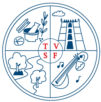“I think music in itself is healing. It’s an explosive expression of humanity. It is something we are all touched by. No matter what culture we are from, everyone loves music.”…Billy Joel
EIders feel youthful and rejuvenated when they hear the music of their youthful days. Though such music can seem to be outdated for the current youth, for elders it is this music, which is youthful as it reminds them of their younger days of dreams and aspirations, struggles and mischiefs.
Songs and music that you listen to when you are in your teens get engraved in memory: Thanks to the turbulence and adventures you witness your youthful days, such music also forms the music of stormy events, whether pleasant or unpleasant, and hence gets deeply ingrained in your memory as an inerasable picture.
The greater ability to store musical events of experiences in one’s memory during youth also contributes to its popularity.
While prescribing music for the elderly, we normally form a norm of Year of Birth + 15 as a minimum and Year of Birth + 25 as the maximum. This would mean that if a person is born in the year 1946 and a choice of appropriate music has to be made for his therapeutic sessions, it is better to take into consideration the hit music of the years between 1961 and 1971 as he might most probably – find them to his taste. Further, according to neurologists’ brain works at an optimum level around this period.
It is also the right period when new skills will be acquired by the youth. It is needless to say that this period constitutes a romantic phase as well where most of the time the youth reminisces and dreams of the loved ones.
It is not exactly an attachment for the songs of this period, which is important here, it is a kind of personal link one develops with such songs, which is rather important as a therapeutic impact. Old songs lead the old people to their youth, to the days of carefree dreams and ambitions and to the dreams of joy and sunshine with friends and loved ones. Such transportation is found to help in people who are aged and infirm and who feel nothing to look in their future.
By constantly going back to such selection of music, elders can find certain comforts and joy as the music is often associated with their hey-days. It is a reminder of those events and people of the past who seemed to be more interesting and meaningful than the present ones encountered by them.
Re-living in the past by rewinding the days associated with the music certainly offers that cheer and tinge of joy that makes the day worth living.
In a recent research paper, Steve Hanssen, a young student at the University of Amsterdam conducted a survey and found that people invariably showed a preference to those genres of music, movies and books with which they could identify their youth. The musical numbers they listened to between 16 and 21 were found to be more emotionally moving for them.
For a post-radiation cancer patient who was born in Tamil Nadu in the year 1926 this author had prescribed popular music of the forties and fifties (for example, the immortal songs of M.S. Subbulakshmi, M.K. Thyagaraja Bhagavathar and P.U. Chinnappa). Self-music therapy sessions lasting 40 minutes thrice a day after her meals made her not only withstand her struggle but also brought in certain positive rhythms and concern towards her grandchildren, with whom she was not pulling on earlier, although she couldn’t survive for long, her family believes that such therapeutic seasons did bring an unusual cheer and contentment in the rest of her life and a significant transformation in her behavior with other family members.
This article was published in ‘Ayurveda And All’, August 2006, Page 28, 29
Was also published in The Eternal Solutions September 2006 – Pages 118 to 120
Edited by Geeta Shreedar, May 13, 2021
